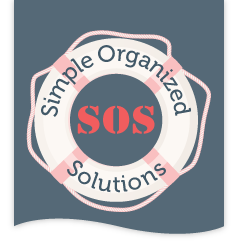 There are numerous reasons why someone would want to get organized. Maybe they can’t find things they are looking for such as their car keys and it causes them to be late for work, a lot. Maybe they buy duplicates or triplicates because they don’t know how many of one item they own. When they realize what the real issue is, they decide it’s time to work on an organizing project.
There are numerous reasons why someone would want to get organized. Maybe they can’t find things they are looking for such as their car keys and it causes them to be late for work, a lot. Maybe they buy duplicates or triplicates because they don’t know how many of one item they own. When they realize what the real issue is, they decide it’s time to work on an organizing project.
There are several things to consider when planning a successful organizing project. A person can become overwhelmed if their project encompasses many areas, or a whole house transformation. I recommend keeping it simple; one space or room per project.
Smaller projects such as a drawer or a closet probably don’t require a lot of planning. If you are familiar with the organizing process, these smaller projects can be accomplished quickly by following the steps in the process.
When you’re planning a larger organizing project such as repurposing a room, you can become quickly overwhelmed if you don’t have a plan. The steps of the organizing process should be included as part of the overall plan.
The tips below are intended to help you to create a plan for a larger organizing project as mentioned above. The key to a successful organizing project, or any project for that matter, is to plan the work and work the plan!
Write down your initial thoughts for this space. Use the tips below to think through the various aspects of your project.
Look at how the space is currently being used – do you want to use it the same way, or for another purpose? Some options may include – office, guest room, kids play room, craft room, nursery, theatre room, artist studio.
Think about the overall requirements of this new space based on the intended functionality. Requirements may include, storage, furniture, cleaning, painting, replace flooring with carpet or tile, window treatments, etc.
Understand your capabilities in terms of the physical tasks. You may need to seek help from family, friends or professionals. Assemble a team if needed; a team could be 2 or more people.
Think about the items you will not keep. The options are to donate, sell, recycle/trash, or gift items. What is your favorite charity for donations? Do you have curbside recycling? What about items not accepted in your curbside recycling service? Do you have a space to dedicate to unwanted items until they can be moved to their final destinations?
The Plan:
- Use your brain dump to list the required tasks.
- Prioritize the tasks; the priority should be to declutter the space (the first 2 steps of the organizing process).
- Schedule the tasks you prioritized in the last bullet point. There may be dependencies to consider. For example, if you are using a team, their availability needs to be taken into account. Or if you need to order supplies, factor the lead time into the schedule.
- Implement the tasks on the schedule to complete a successful organizing project!



Hi Eileen – So the term brain dump refers to getting your thoughts & ideas out of your head onto paper, or an electronic device. It’s very useful for planning. I use it when I’m planning a project such as an organizing project. When I need to come up with a strategy to tackle a room, or a whole house, I get my ideas out of my head of where to begin and why to start there. This keeps me from running all over the place and not getting anything done. I hope I answered your question.
Please explain or give an example of a brain dump , thank you ,